
Deep down in the southern part of the Caribbean, just off the coast of Venezuela, lies the ABC islands, which consist of Aruba, Bonaire and Curacao. These three islands are also apart of the Dutch Caribbean and are island territories of The Netherlands, which is why my Dutch husband wanted to go here. We only managed to get to 2 out of 3, but the debate was on: Aruba vs Curacao.
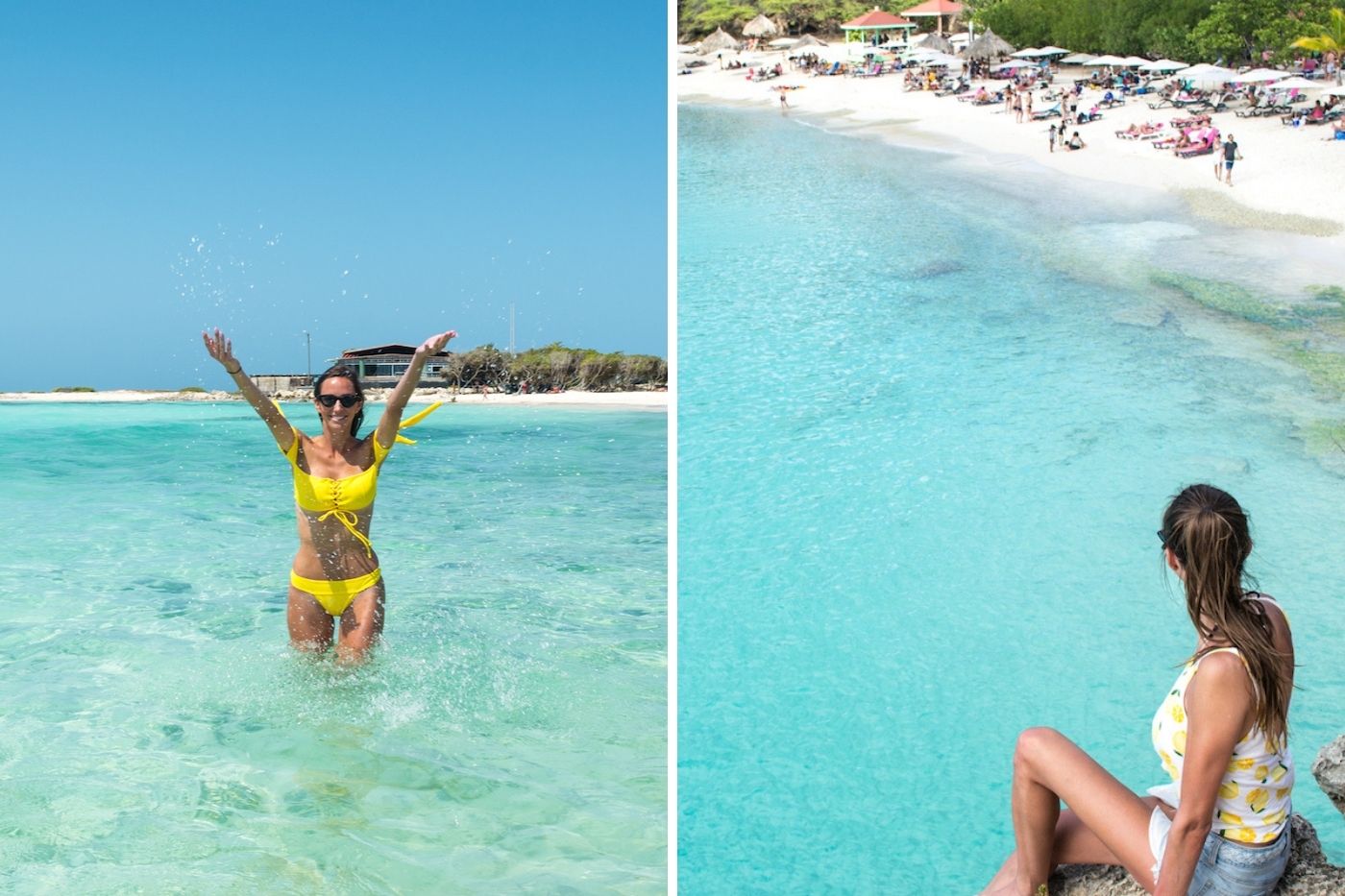
The two islands seem close on a map but there are no ferries running between the islands and the ocean is too rough for smaller boats. The only way to get between Aruba and Curacao is to take a flight or visit both islands as part of a cruise. Flights from Aruba to Curacao are a short 35 minutes, so if you have the time to visit both islands in one trip, definitely do so. But if you only have a few days, I’d pick one or the other so you don’t waste time in transit.
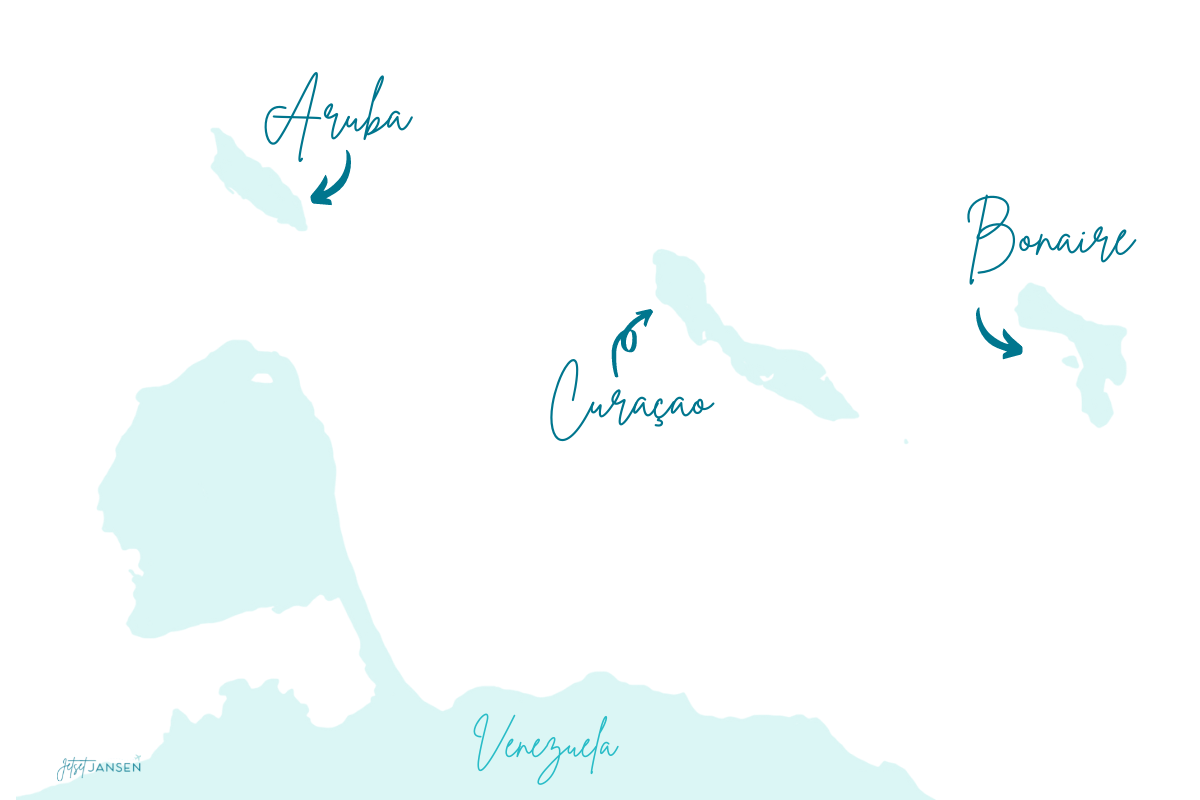
At first glance, you would assume Aruba and Curacao would be fairly similar, being that they are both island destinations for diving, have pretty beaches and are Dutch. And they are similar in that sense, but these two islands also have some pretty noticeable differences.
Aruba vs Curacao
So, which island is better, Aruba vs Curacao? My husband and I had the debate for several days. Both islands have their pros and cons, so let’s break it down.
Getting there: Tie
Aruba and Curacao are easily accessible islands with direct flights to both Dutch Caribbean islands from South Florida. Flight costs are about the same and the flights to each are roughly 3 hours. For Aruba, you’ll be flying into the Queen Beatrix International Airport and for Curacao, you’ll fly into Curacao (Hato) International Airport.
Getting around: Aruba wins
Both islands are a decent size and renting a car is 100% necessary because cabs are expensive (even though they are regulated). Plus, if you don’t know how much your taxi should be with the regulations, you’re likely to get ripped off.
Aruba is easy to get around with a map and once you drive around for a bit, you find your way. It’s also a smaller island so it is much easier to get out and explore pretty thoroughly on your own. However, you will need a 4×4 if you want to go ALL over the island, since a lot of the island is the rocky/sandy terrain of the national park.
Curacao, on the other hand, is an absolute train wreck of a labyrinth of one-way streets. It is essential to have someone on google maps constantly routing you and even then, one-way streets will pop up and you will be thrown on a loop road unable to get back where you need to be because there are so many one-ways.
To be fair, that’s mostly describing the capital. Once you’re out of the city, it’s very easy going. But going into the main part of the capital is an adventure if you aren’t familiar with it.
Affordability: Curacao wins
This one is up for debate but we found Aruba to be more expensive than Curacao. Almost every restaurant we found around the city center was minimum $20 per person, usually more.
Any taxi from the airport to a hotel or region was around $28 (again, they are regulated but steep if you aren’t going within the main city and we definitely got ripped off by our first one). The mini markets in Aruba are WAY too expensive. Stop in for a few beers and a bag of chips and you’ll end up spending $25.
We stayed a bit outside Willemstad in Curacao and were able to find places to eat for less. We also found larger grocery stores that had more normal prices, so we were able to pick up breakfast and lunch supplies.
READ MORE: Aruba on a Budget
Beaches: Aruba wins
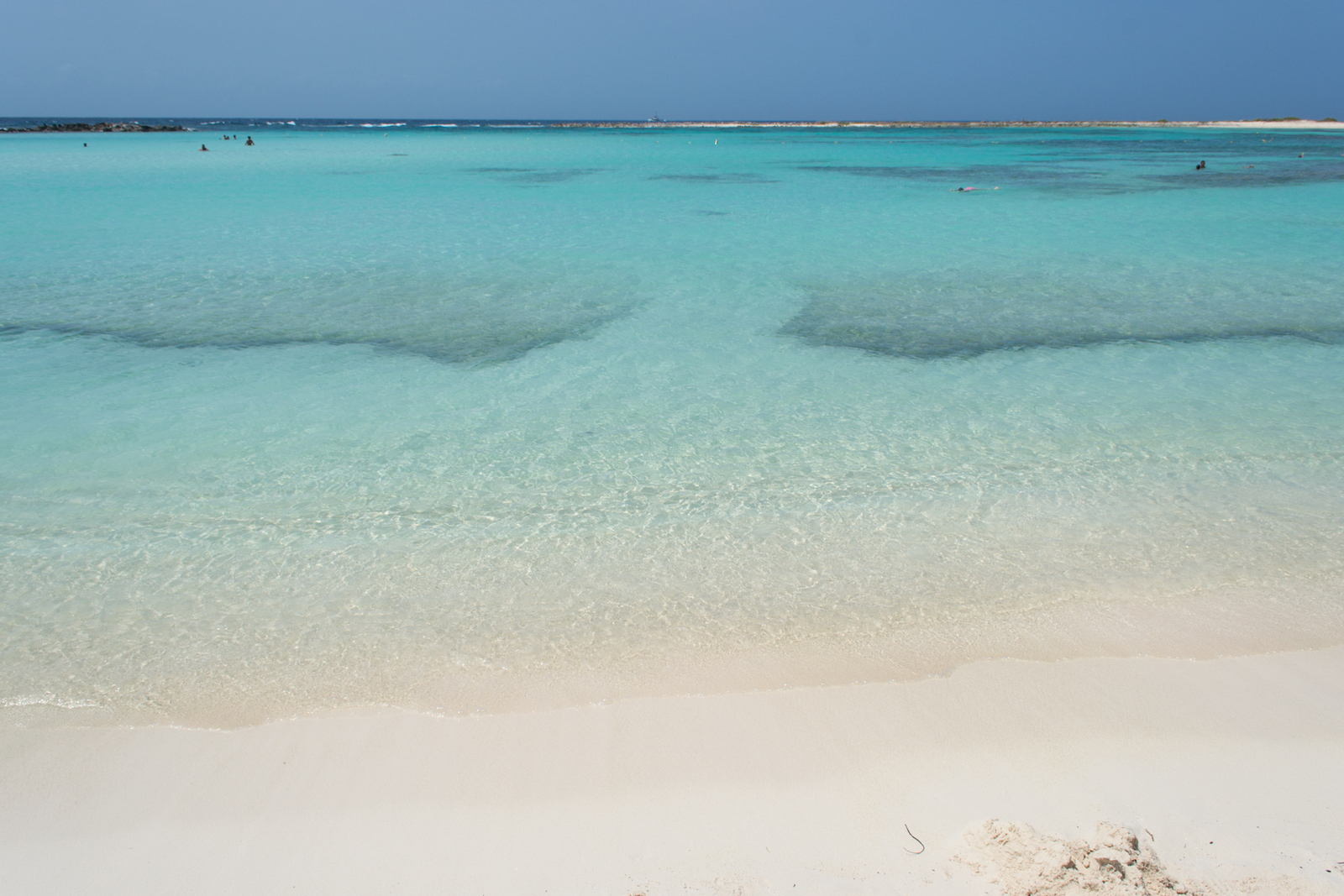
Although Curacao has some pretty beaches, Aruba has better beaches. The main difference between the beaches in Aruba and Curacao are that Aruba’s beaches are longer and cover more coastline while beaches in Curacao are typically smaller. Even so, you’ll find white sand and glistening turquoise water on both islands, so you can’t go wrong.
Eagle Beach is the longest and one of the most popular beaches in Aruba with fofoti trees on the beach that grow in the direction of the wind. It’s also a popular place to stay since there are many hotels along the beach. Baby Beach in Aruba is absolutely gorgeous. It’s in a little cove so the water is still and incredibly blue. Each beach we drove to was very scenic and had glistening turquoise water.
Curacao’s front runner for me is Playa Kenepa. When you arrive, you walk up to an overlook that has a view into the turquoise cove. It really is a gorgeous view. The sand is white, the water blue and it’s just a great place to spend the afternoon.
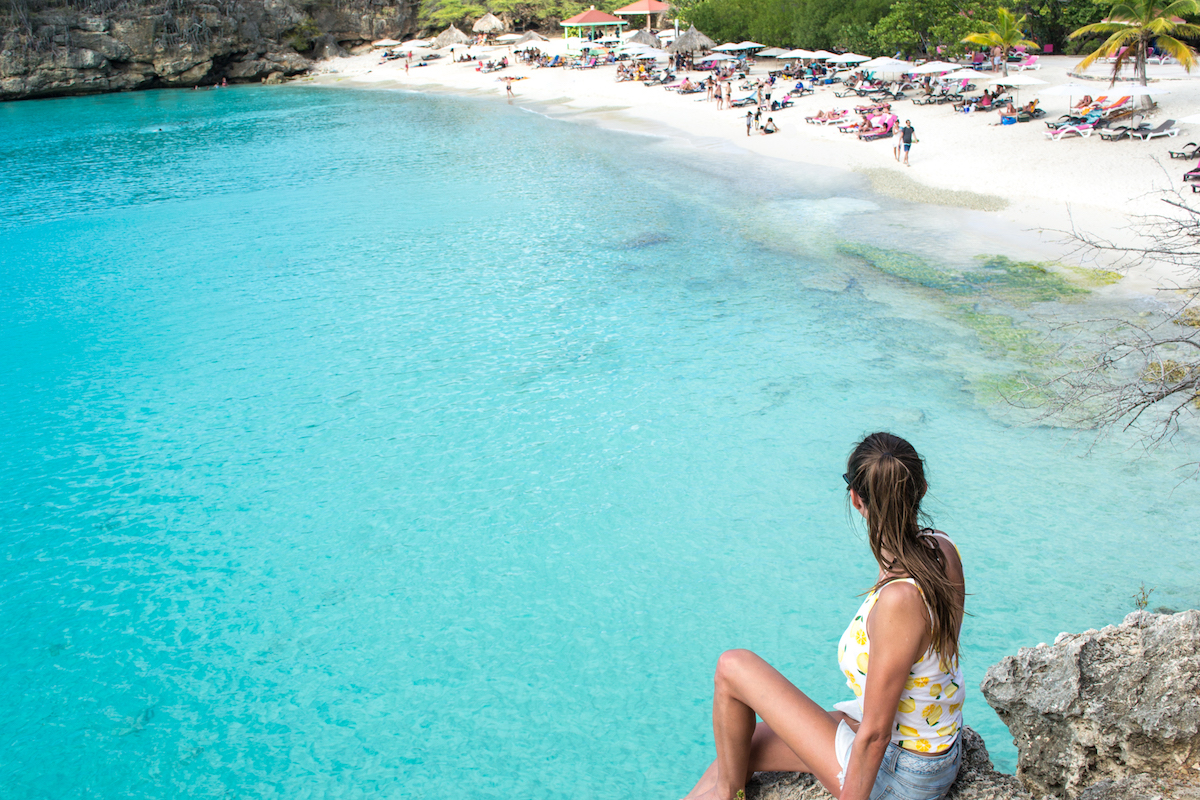
Weather: Curacao wins
Curacao is sunny with warm/hot temperatures and is a bit breezy. Aruba is sunny with warm/hot temperatures and is EXTREMELY WINDY. Like, wind all the time. Aruba has trade winds going across the mostly-flat island constantly. My long hair was in a constant knot and I often felt grimy from dirt being blown around. Though it does give a nice reprieve from the heat.
The good news is that both Aruba and Curacao sit outside of the hurricane belt, so you don’t need to worry about hurricanes or a heavy rainy season. Not to say that it doesn’t rain at all–you’re more likely to see rain in the fall or winter months, but it isn’t necessarily something to plan your trip around.
Dutch Influence: Curacao wins
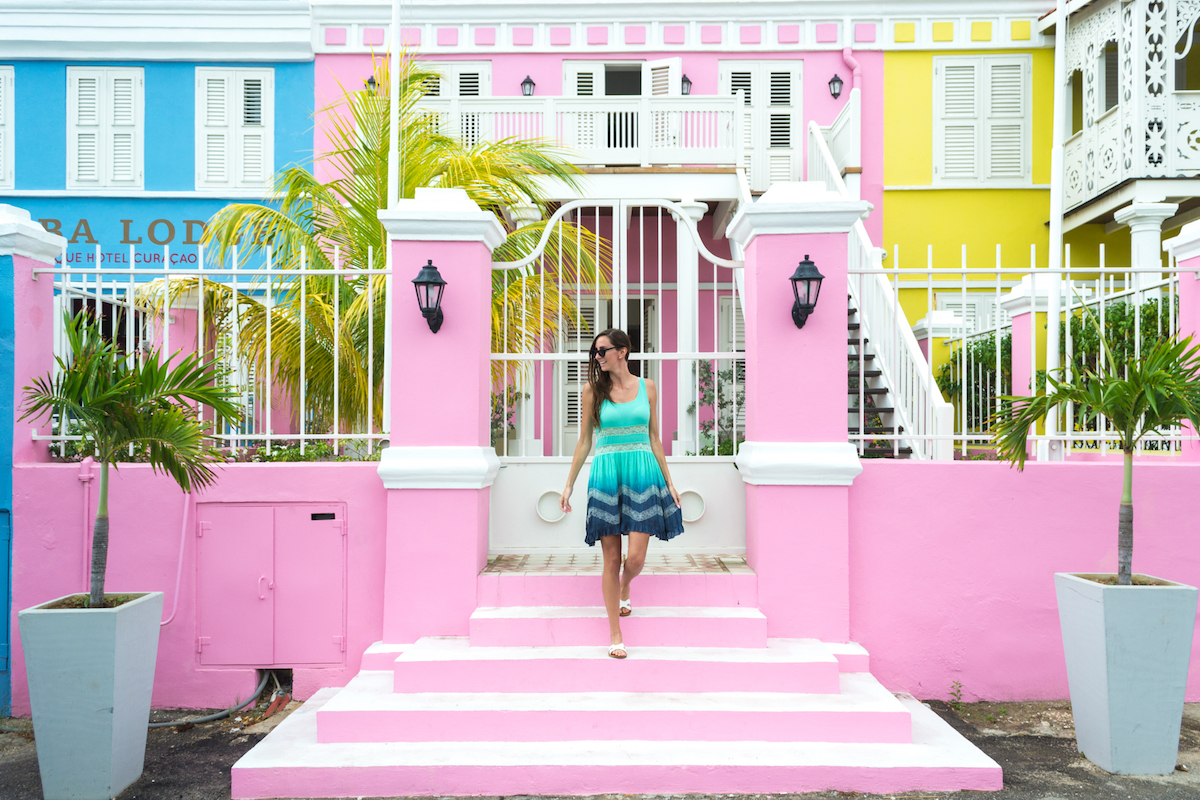
As I stated before, my husband is Dutch and was really homesick when we planned our visit here. So he was really looking forward to experiencing some Dutch culture.
While we expected to find a heavy Dutch influence on Aruba, that just wasn’t the case. Yes, there are Dutch people living there and some people do speak Dutch but Spanish was heard way more. The mini marts/food stores mostly had Asian names and there were too many American restaurant chains. Aruba is definitely a little more touristy.
Curacao was incredibly charming. In Willemstad, you can find brightly colored colonial buildings alongside the water that resemble the buildings alongside the canals in Amsterdam. It also tends to be a popular place for Dutch transplants since the island is bigger and known for its popular bars and clubs.
So you’ll hear more people speaking Dutch and find more places with Dutch delicacies. My husband was very excited to find more of his people here and to converse in his native language again.
Capitals: Curacao wins
In the Aruba vs Curacao debate, Willemstad, Curacao easily wins for capital cities. Like I said before, this is where you will find the colorful buildings that look like Amsterdam (though Amsterdam’s building are mostly monochromatic). The town is lively and fun to walk around. There are shops, restaurants, history, the Queen Emma bridge, markets, etc. It’s touristy without feeling too touristy.
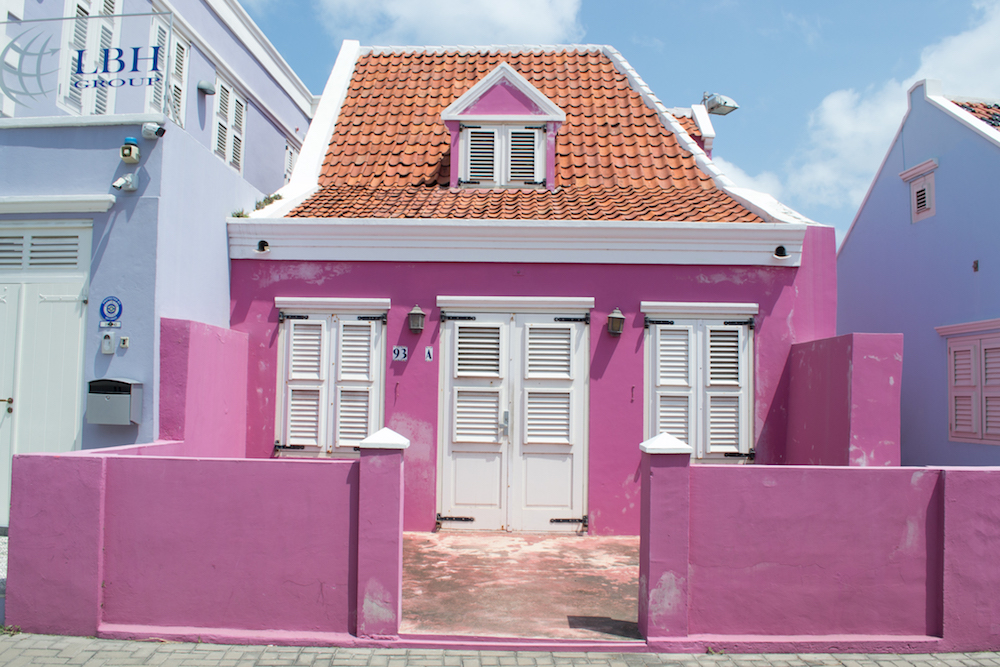
Oranjestad, Aruba was a bit of a disappointment. The main part of the city seemed built for cruise ship traffic. The expensive shops and expensive restaurants just screamed cruise traffic or “tourist trap” to me.
The pedestrian street that they do have was completely empty when we went. And I’ve been to other islands with shopping areas like that–that are only lively if cruises come in. It does have the colorful buildings in Oranjestad, but we didn’t really know where to go or what to do.
Landscape: Aruba wins
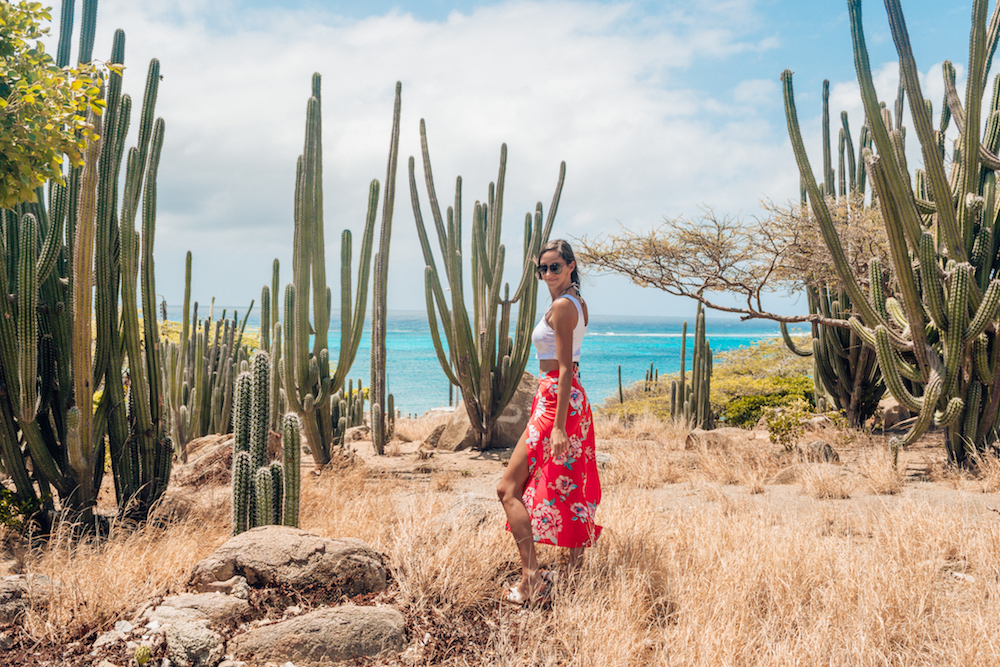
Aruba has a very desert-like landscape. It’s very dry with lots of dirt and lots of cacti. There’s not much vegetation besides cacti and divi divi trees. Curacao did not have as many cacti and a lot of the plants and trees were dried up and dying to me. It still had some very pretty areas but driving through was just ok. To me, Aruba was a little more interesting to see as there were fields of cacti all across the island.
Safety: Aruba wins
In general, Aruba has nice people living there. Everyone seems very laid back and you don’t feel the need to lock up your belongings in safes. People reassured us that our things would be fine and left alone. We met some friendly locals at Carnaval who told us some tips for visiting and even invited us to ride horses with them, and we did!

We met them at their ranch and went horseback riding through the cacti at sunset. The paths took us through the desert landscape and we eventually ended up at a secluded beach.
For Curacao, we felt like we needed to be more watchful. Though we didn’t have any problems, the vibe was a bit different here. The first thing people told us when we arrived was to NEVER leave anything in our car. Then they told us to keep it unlocked with the windows down because apparently break-ins are common. We were warned several times and this was a common topic on forums as well.
Cruise Ports: Curacao Wins
Cruises aren’t necessarily my thing, but because of the popularity of Caribbean cruises, it’s a valid topic to mention. Especially since Aruba and Curacao both are cruise destinations. In fact, Fodor’s mentions Oranjestad, Aruba as one of the 11 busiest cruise ports.
Though Aruba gets more traffic, the area around the cruise port is very geared towards tourism. The long streets are filled with shops and nice hotels. There are gift shops and luxury, designer boutiques…it definitely caters to a certain crowd.
The cruise port in Curacao is in Willemstad and puts you within walking distance of the old, Colonial buildings. While it still has shops and things, it’s a little less Americanized. Some of the shops are located inside Rif Fort which is a historic fort built in 1828. You can walk along the Queen Emma Bridge and of course shop the main streets. It just has a different feel and you can explore the history of the island on your stop, while Aruba feels more of just a shopping port.
When it comes to Aruba vs Curacao as a cruise stop, Curacao wins for sure in my opinion. It of course depends on what type of cruiser you are and what you like to do, but…you can shop luxury goods in the mall at home.
Flamingos: Aruba Wins
I know you’ve seen the pictures of pink flamingos on a beautiful, tropical beach. Those pictures happen to be from Aruba. But a little context behind the pictures–flamingos aren’t actually native to Aruba.
They can be found on the private island owned by the Renaissance Hotel. There are 6 flamingos that are permanent residents there, possibly because their wings are clipped (no one really seems to know what the story is and why they stay there).
Curacao on the other hand has a lot of Flamingos in the wild. But it certainly isn’t the picturesque setting of a tropical beach. They can likely be found in St. Willibrordus salt pans and a few other lagoon-type places. While it’s neat to see them in their natural habitat, it is pretty far away. It’s hard to get a good look at them and to take any good photos, you’ll need a zoom lens and a tripod. It’s also not the most scenic of places.
This one is a bit subjective. I don’t really know if Aruba’s flamingos had their wings clipped or not. They could be rescued or there could be some other story behind it. If it was a rescue situation, Aruba wins for allowing up-close encounters and because of the setting. Flamingos eating out of your hand on a gorgeous beach is hard to beat.
So…which island is better Aruba vs Curacao?
If you’ve kept track, you’ll notice that it’s a tie, which is why my husband and I debated this for so long. There are a few more topics I could add but they are a little more specific or hard for me to answer. Such as:
Food
I had good seafood on both islands. Aruba has a popular seafood restaurant called Zeerover where you can pick freshly caught fish and they’ll cook it right up for you. You can also find traditional Dutch food on both islands, which is definitely worth trying. However, we didn’t eat at too many hot spots for me to be able to get a clear winner.
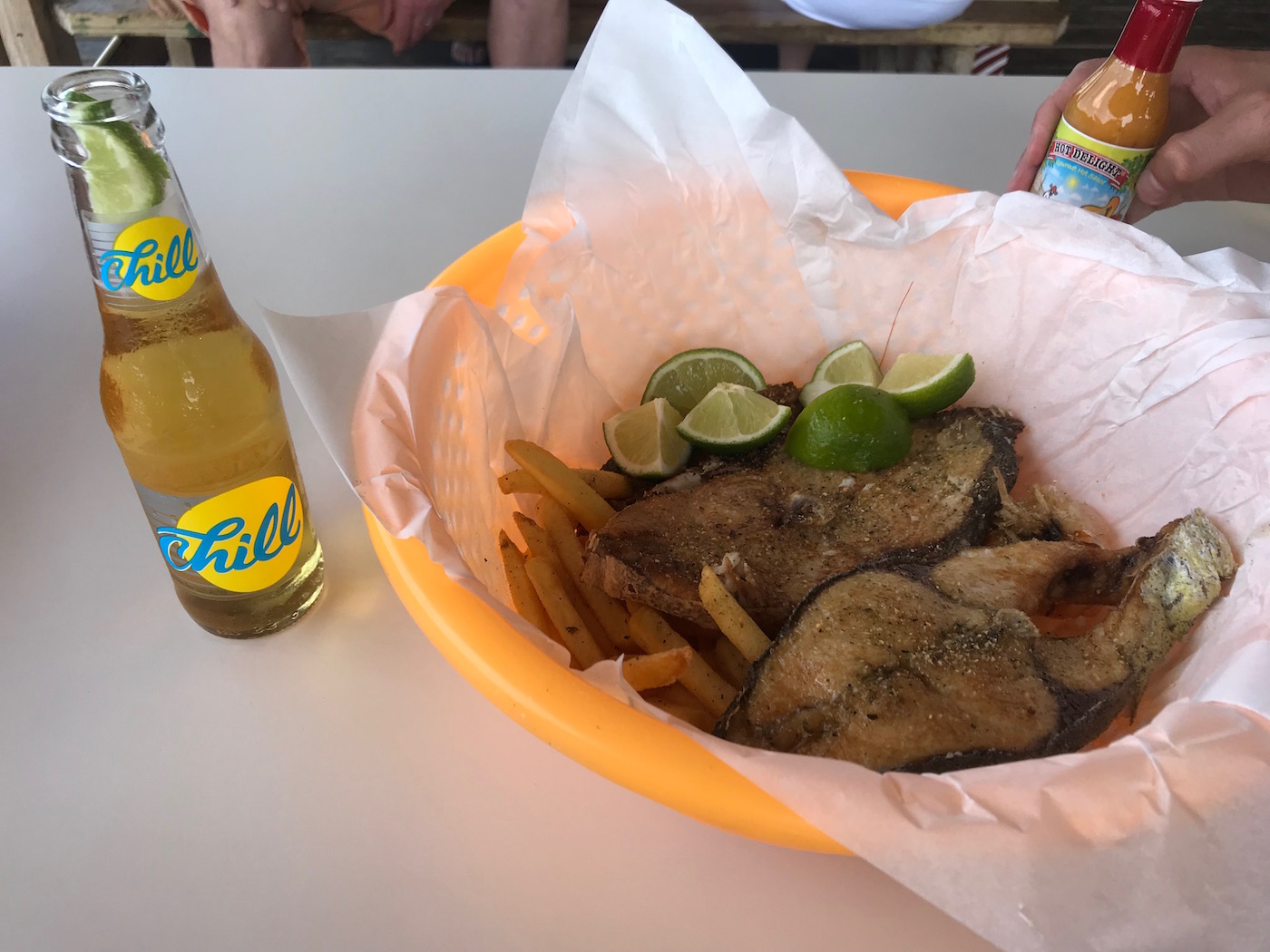
Snorkeling/Diving
Curacao seems to have more spots for snorkeling and definitely more shore diving/snorkeling. Aruba was where I originally wanted to dive as they have a 400 ft wreck (The Antilla) and a few plane wreck dives, but it didn’t work out.
Instead we dove in Curacao and did the tugboat wreck and some reefs. I’ve read on numerous blogs that most people prefer Curacao over Aruba for diving, which I was a bit surprised by (and if the option is there–most said Bonaire wins overall).
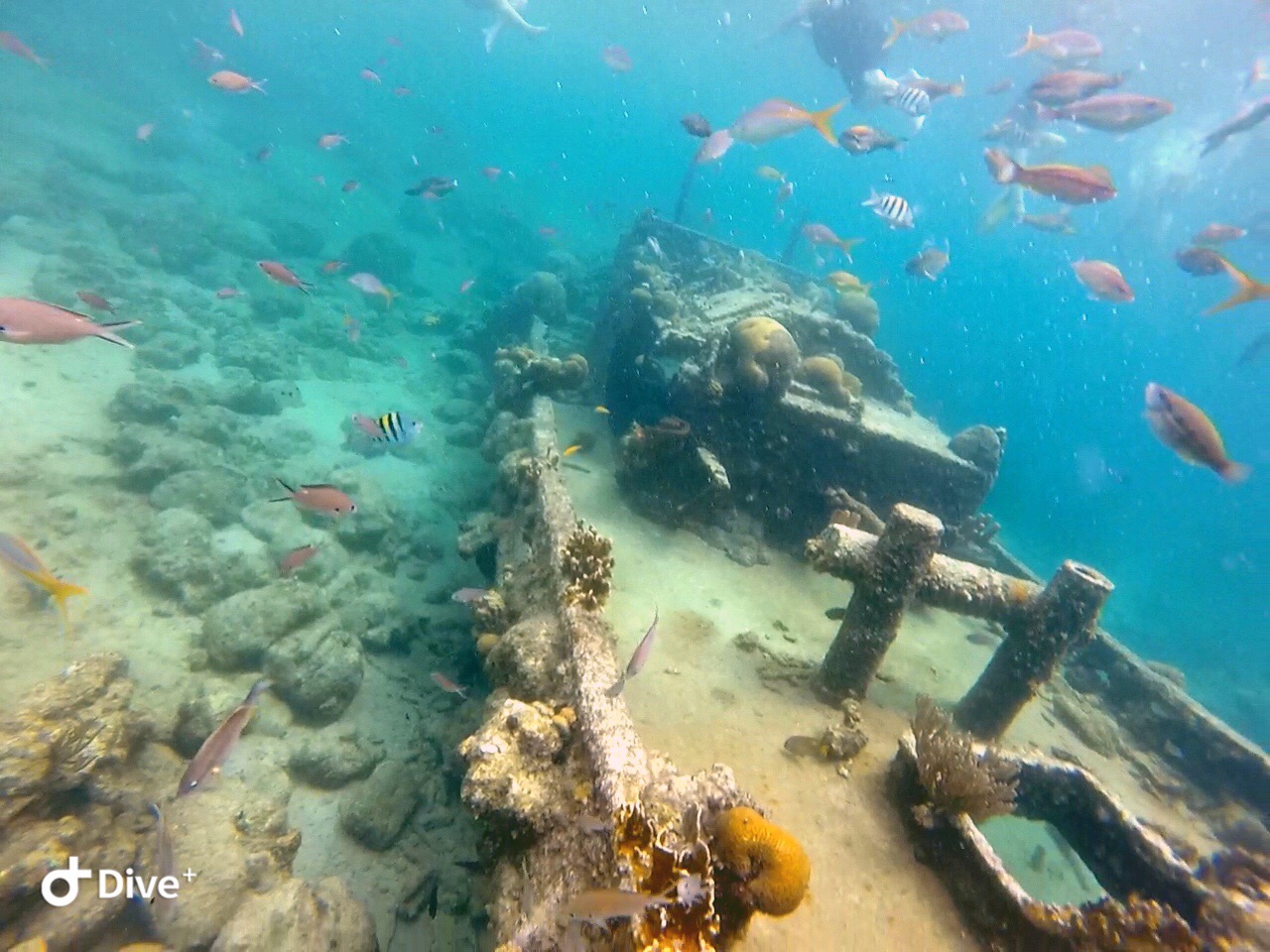
Note: If you plan on diving in Aruba or Curacao, make sure you plan your trip with enough time to do so! As a general rule, you should wait 24 hours after diving to board a flight.
Carnaval
If we’re adding Carnaval to the Aruba vs Curacao debate, I think Curacao would win this one as well. We only attended Carnaval in Aruba (so I can’t accurately judge) but apparently the parade and celebration in Curacao is much, much bigger than Aruba.
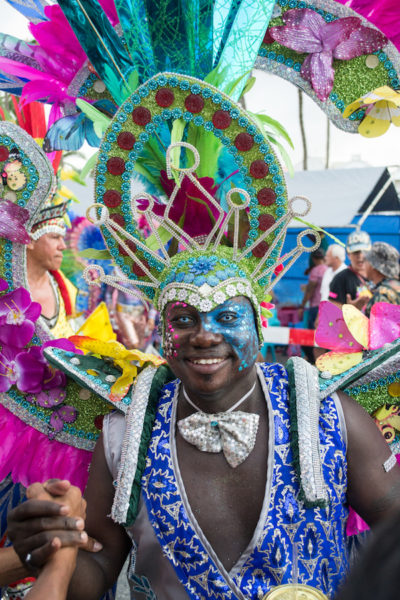
We had a great time celebrating Carnaval in Aruba and the costumes were fantastic. For my first time experiencing a Carnaval celebration–I had a lot of fun. But we did hear that Curacao has bigger celebrations and a bigger parade.
So who wins: Aruba vs Curacao??
This is the debate people! Even after I’ve weighed out both sides, I keep going back and forth. Frankly, it depends on what is most important to you.
Aruba and Curacao are beautiful islands and both are worth visiting. Curacao might be the better island for you if you have a little more time to explore and want more of the tropical Dutch vibe. If you want a relaxing beach getaway, then Aruba might be the better island for you.
I would easily return to both of these islands. Curacao-for the culture, beautiful buildings and beaches. Aruba-for the beaches, landscape and laid-back vibe of the island (and to finally dive there!).
If you still need help deciding, read on to find out more about each island below!
Already know which Caribbean island is for you? Check out these island guides to start planning your trip!
Aruba Island
The first and smallest of the three islands is Aruba. Aruba island is a fun and beautiful island to visit. Because of its size, it’s easy to get around and explore. It has some areas that are built up for tourism, especially around the cruise port. And in general, Aruba is pretty ‘Americanized’. Though it’s the smallest island, it receives nearly twice as many tourists than Curacao does–with around 80% of those coming from the United States.
Landscape-wise, it has an interesting terrain that was pretty unexpected. Instead of tropical palm trees, it has a rocky, desert-y landscape with lots of cacti. You’ll even come across giant cacti! The weather is pretty consistent year round, which makes it an ideal getaway if you’re looking for a tropical escape.

It’s also home to Divi Divi trees and fofoti trees, which all point southwest due to the trade winds and act as a natural compass. It’s great for people who have no sense of direction! (me).
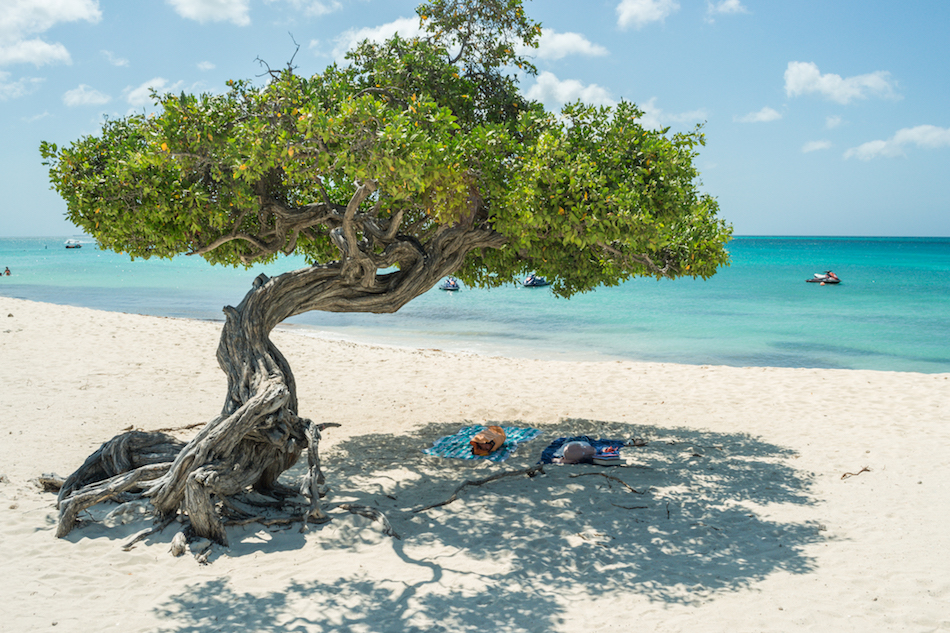
Update: Evidently the Divi Divi trees often get mixed up with the Fofoti Tree! While they look very similar, their trunks grow a bit differently. They both point southwest because of the wind but Divi Divi trees are found across the island, while Fofoti trees are found on the beach.
Another interesting fact about Aruba is that about 20% of the island is a National Park. The Arikok National Park has a rocky coastline and natural pools to explore. To explore this part thoroughly, you’ll want to rent a suitable car or you can get on a tour through the park.
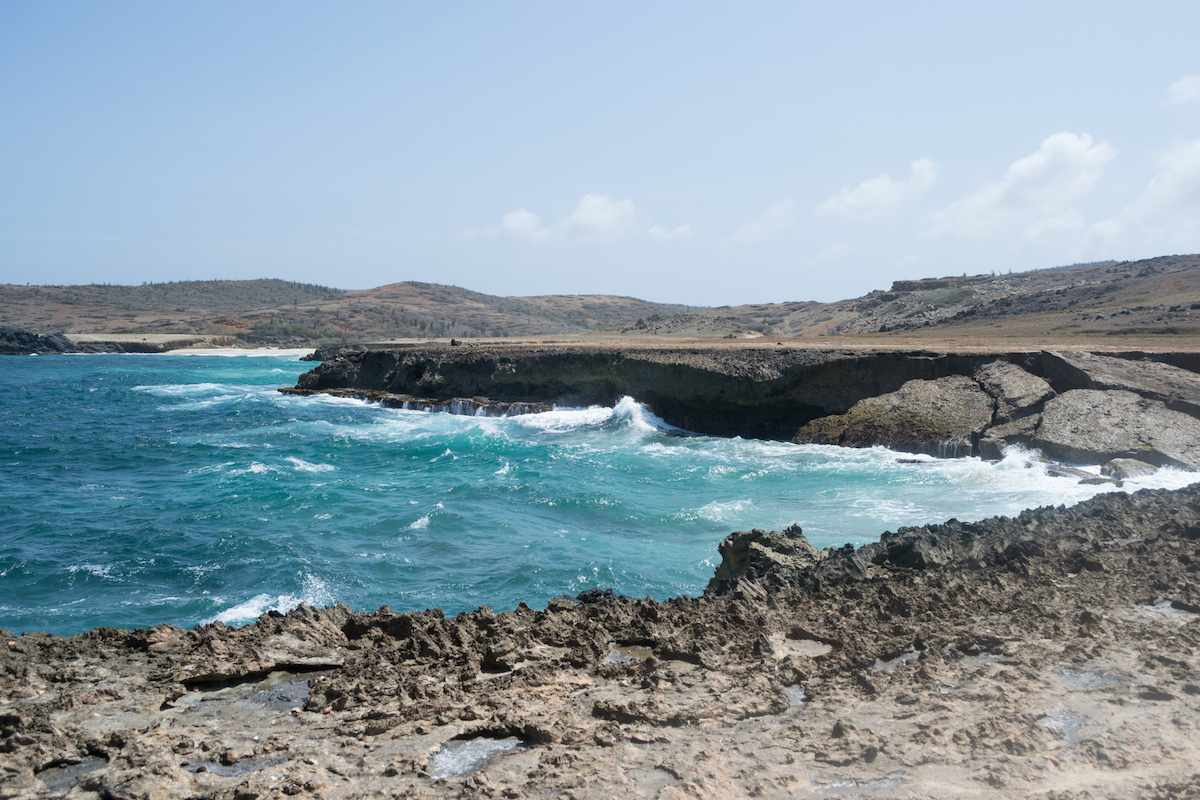
For the most part, Aruba is a pretty flat island. There’s lots of pretty beaches and beautiful scenery here. It was hard to pick a favorite spot because the water was pretty all over.

How many days do you need in Aruba?
Spending 3-5 days in Aruba is enough time to have a relaxing beach getaway, but you could easily spend a week here. 3 days is on the shorter end–it allows you to get some beach time, but you won’t be able to explore as thoroughly. 5 days in Aruba is a great amount of time to relax and explore, and 7 days will allow you to explore at your leisure and have plenty of time to experience the island.
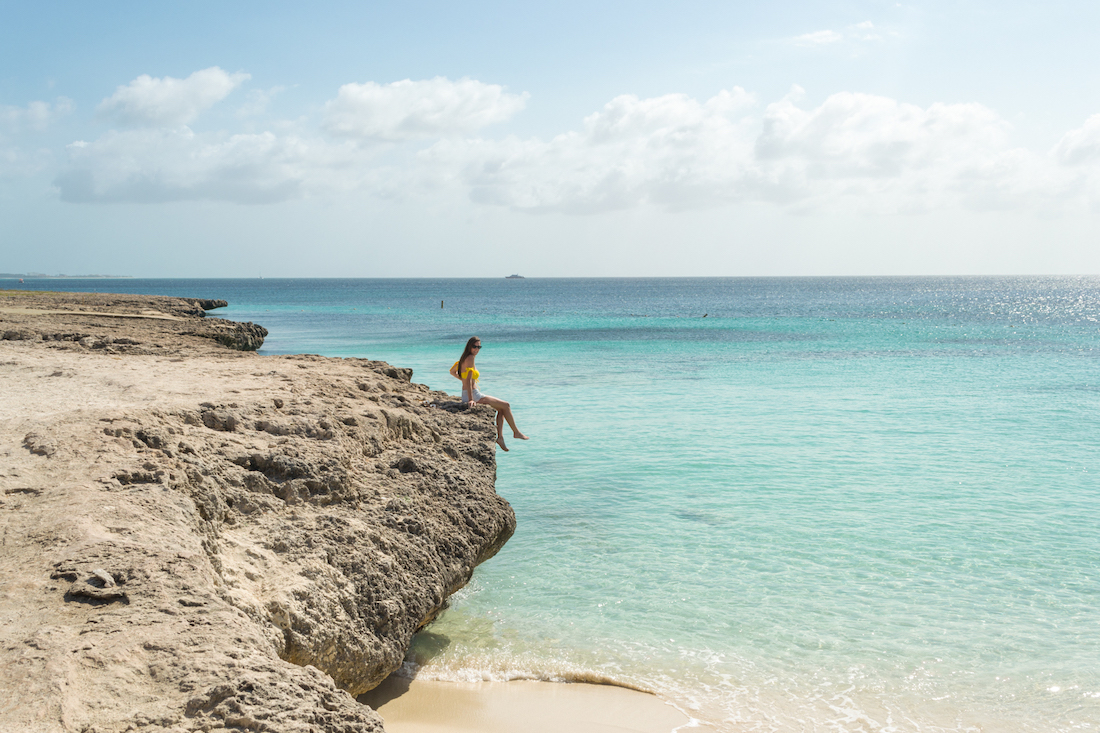
Curacao Island
In the middle of Aruba and Bonaire is Curacao. The island of Curacao is the largest of the ABC islands and twice as large as Aruba. Though ironically, it gets about half the visitors of Aruba and some 60%+ of those visitors are only there for one day on a cruise excursion.
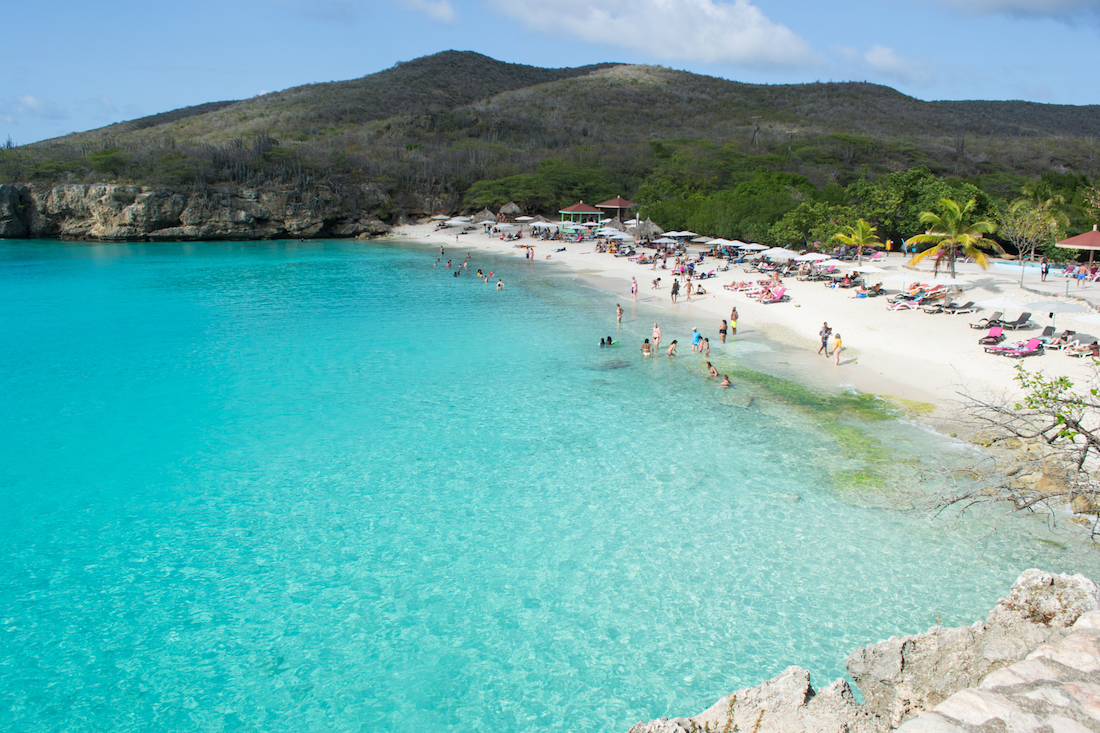
This island also has a desert-like landscape inland and definitely beautiful beaches as well. The landscape is more mountainous with a popular mountain hike to Mt. Christoffel, the highest point on Curacao. It’s hard to beat mountainous islands, especially when it comes to photography.
Curacao has a strong Dutch culture and is sort of like the tropical version of Amsterdam. The buildings are brightly colored in the capital city with the same Dutch colonial look. It’s a very colorful island and is fun to explore.
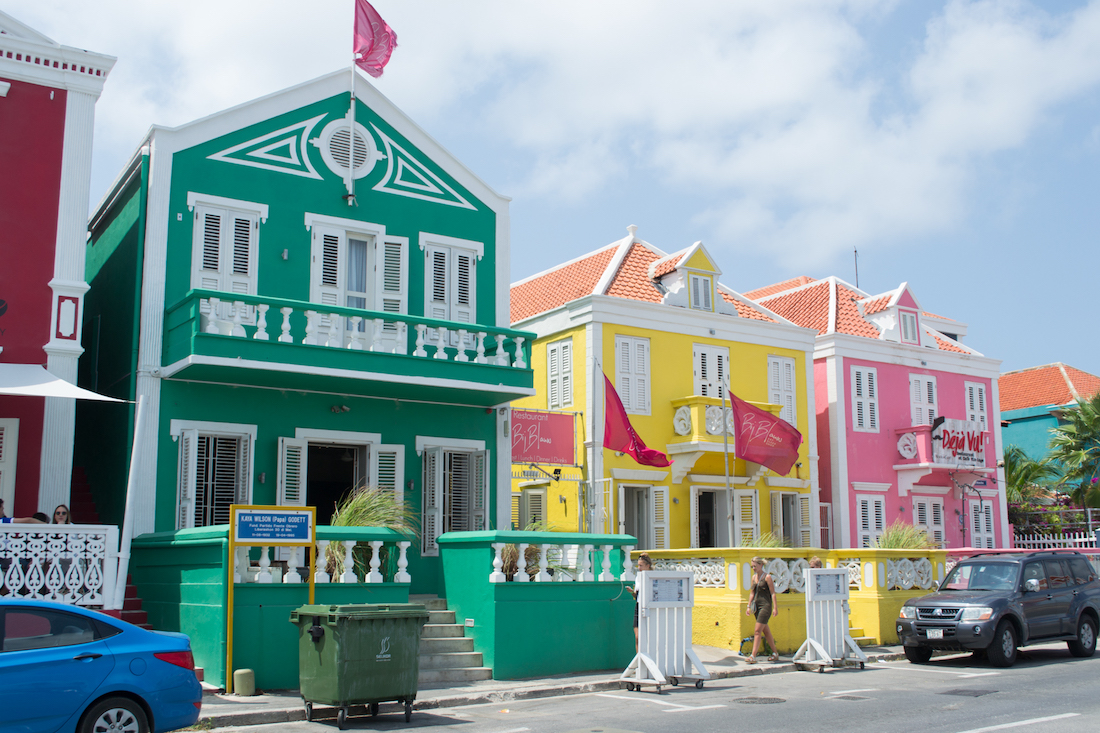
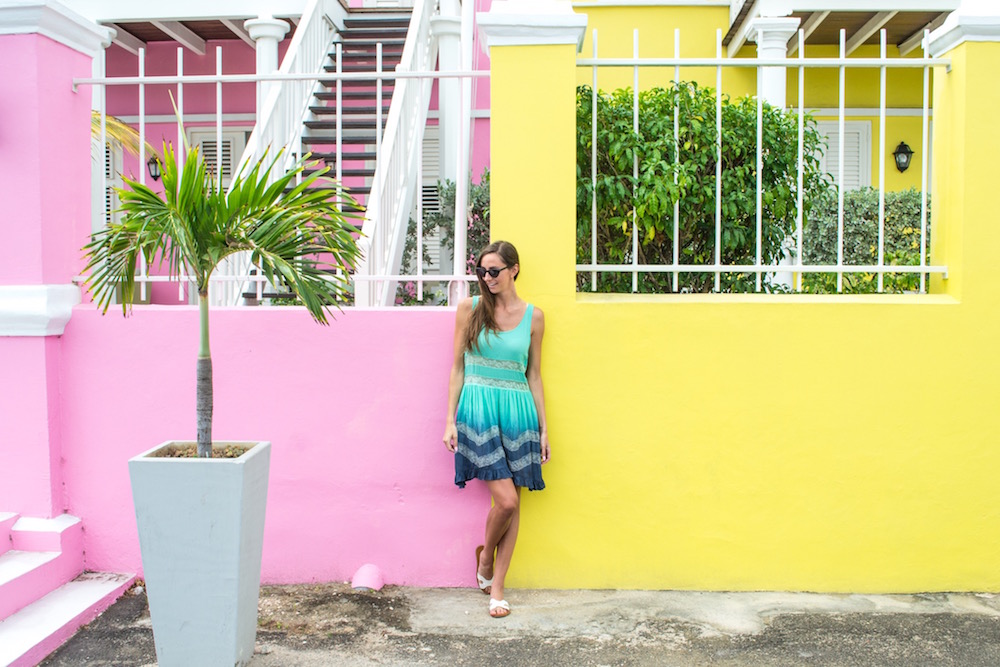
You’ll find a few more Dutch comforts here like Albert Heijn, the popular grocery store chain in The Netherlands, and stands selling raw herring–a Dutch delicacy served with chopped onions.
How many days do you need in Curacao?
Since Curacao is a larger island, you’ll want to have a little more time to explore here. 3 days will allow you to see the highlights but isn’t a lot of time to explore further. Spending 5-7 days in Curacao is the perfect amount of time to explore the island and have some time to relax.
Check out some other great Caribbean islands to visit!
PIN IT FOR LATER

Have you been to these islands? What do you think: Aruba vs Curacao?

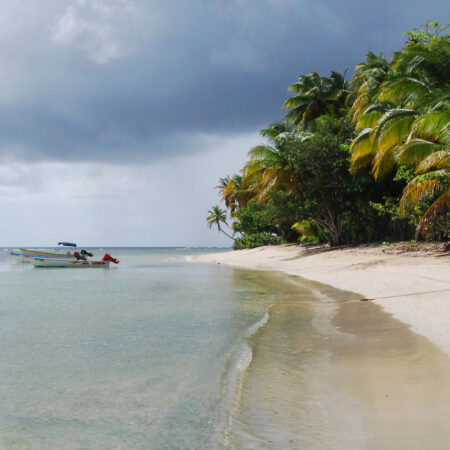
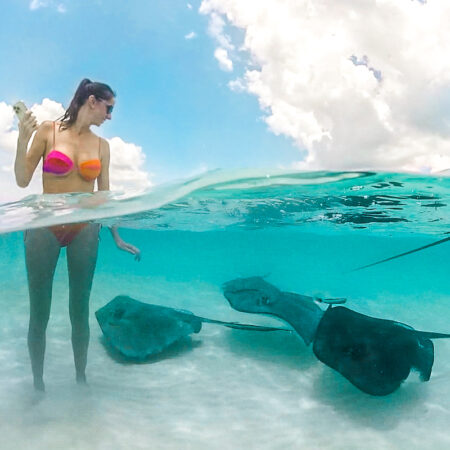
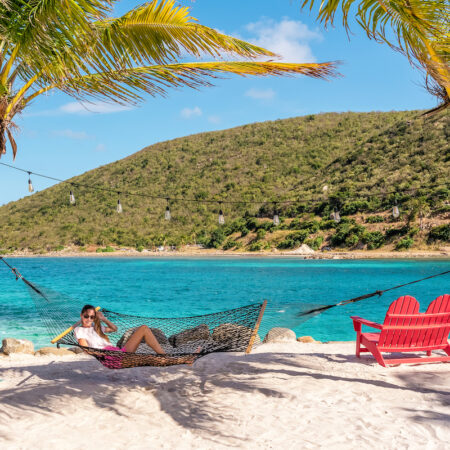
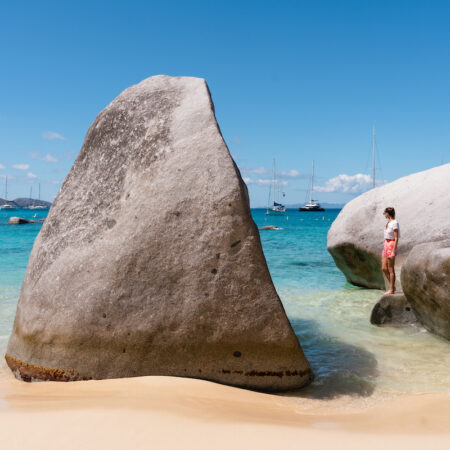

I lived on aruba on and off for 20 years. I finally got fed up. Yes it’s beautiful to visit but it’s not as safe as you say. Most arubans don’t like Americans. They live our money. People on curacao don’t like arubans. The government treats locals very well but not the columbians or Philippinos or Jamaicans or the workers that keep the island moving. Tourists really don’t know the culture. It bothers me that tourists spend so much money there and the locals talk very bad behind your back. I call it the opportunistic island. Good luck . I finally had it .
I am in a wheelchair. I am not bound to it , I can walk a little, are the beaches in Aruba and Curacao accessible to wheel chairs.
Hi Karin! I recall more of the beaches in Curacao having stairs. I think Aruba would have more accessible beaches and it also has several resorts along Eagle Beach that may offer additional services for wheelchair accessibility!
Aruba is better